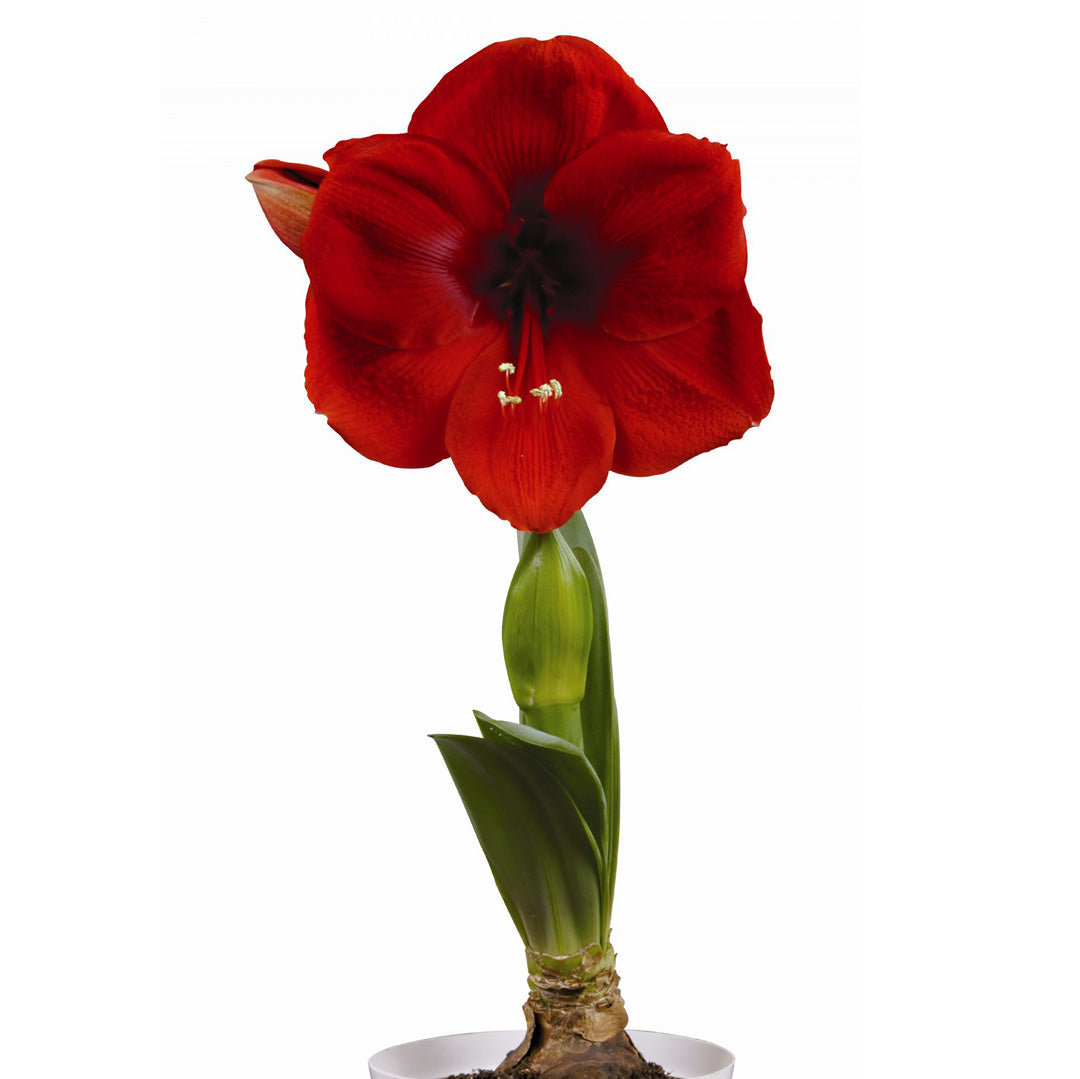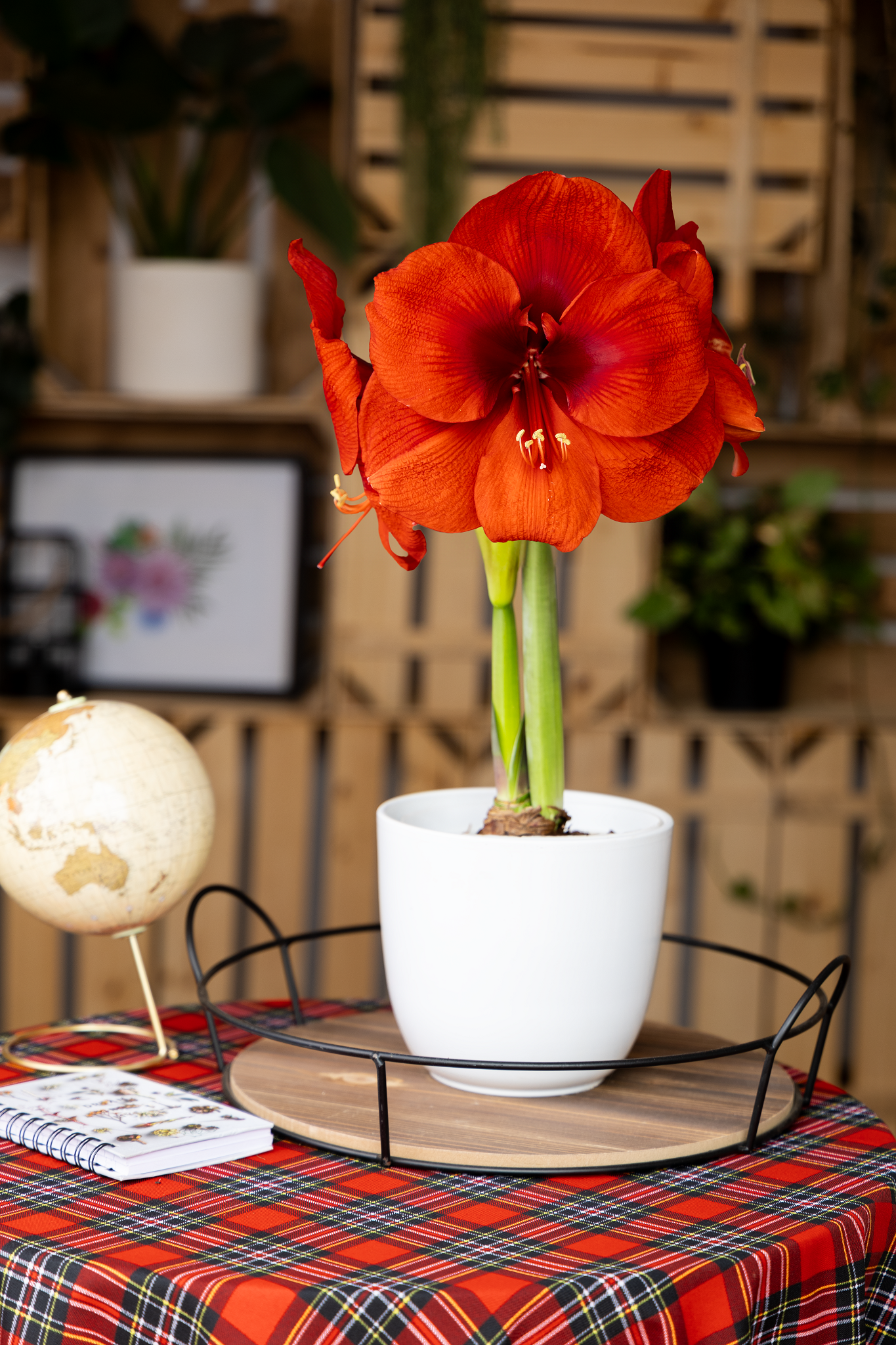Hadeco
Amaryllis Symphony Single - Cayenne™ - 1 bulb p-pack (451)
Amaryllis Symphony Single - Cayenne™ - 1 bulb p-pack (451)
SKU:4034512490P
This content is protected. Please log in with your customer account to continue.
Consistent and compact, Cayenne™ features large, flat and well-formed red flowers with a deep red throat and visible lustre. The broad blooms grow brilliantly on thick and supportive stems.
Family: Amaryllidaceae
Common name: amaryllis, Christmas flower
Sun exposure: Full sun and semi-shade
Planting time: September – January
Flowering time: October - February
Active growth: September - April
Dormant: May – August
Lifting time: June
Type: True bulb
Mature height: 40cm
Planting depth: Plant with the neck above the soil
Plant spacing: 10cm apart
Watering: After planting, water and then wait 10 days for the roots to stabilise. Thereafter, water every 3-4 days when planted in the ground for 10 minutes. If you have planted them in containers, water every 2-3 days, until water runs out from the bottom of the container. Empty saucers 30 minutes after watering.
Position and soil
Amaryllis is one of the easiest plants to grow. It produces gorgeous blooms in just a few weeks after planting. They are happy in well-draining soil, but tolerate a variety of soils, ranging from heavy loam to light sand.
Further Care
Feed weekly with Hadeco Bulb Food until March. Watering should continue into April and can come to a halt from May. Bulbs can remain in the soil or be lifted once the foliage is yellow and has wilted. If you choose to lift, store them in cool and dry places (a dark cupboard or garage will do) and then at the end of winter it can be cleaned of old brown foliage and replanted in the garden or pots.
Share




